Most of the sheep we count in our dreams are either white or black but those are not the only colors that a sheep can be. There are actually several colors that sheep can have depending on their breed and genetic history.
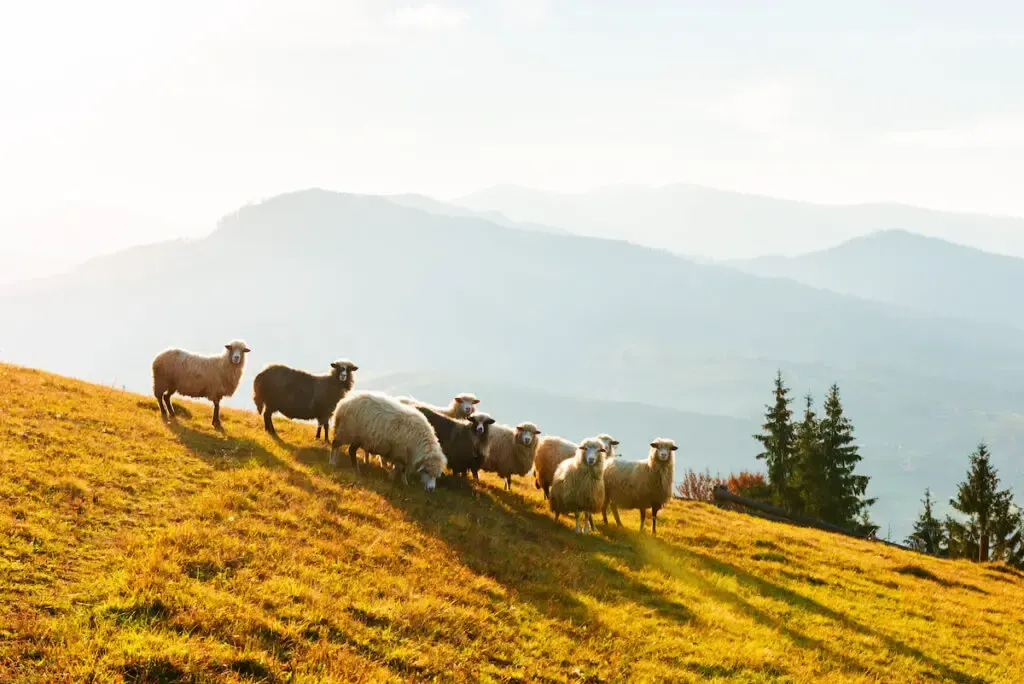
Sheep can come in a number of different shades of various colors including white, black, red, cream, gray, and brown. They can be solid or have an interesting pattern of colors on their coats of wool or hair. It really all depends on their breed, bloodline, and genetics.
Genetics play the main role in determining what color a sheep will be and, over the years, sheep breeders have finely tuned many sheep breeds to produce specific colors. The more you know about sheep and their possible coat colors, the more prepared you will be to enter the sheep raising world.
What Colors Can Sheep Be?
Sheep can be a variety of colors depending on their breed and genetics. A sheep’s color can determine its value if the intention is to sell the wool or hair for profit as certain colors can generate more or less money.
The most common colors seen in sheep are white, red, black, gray, silver, brown (moorit), and cream. They can be light, dark, solid, multi-colored, and patterned. The patterns can include stripes, speckles, piebald, and spotted.
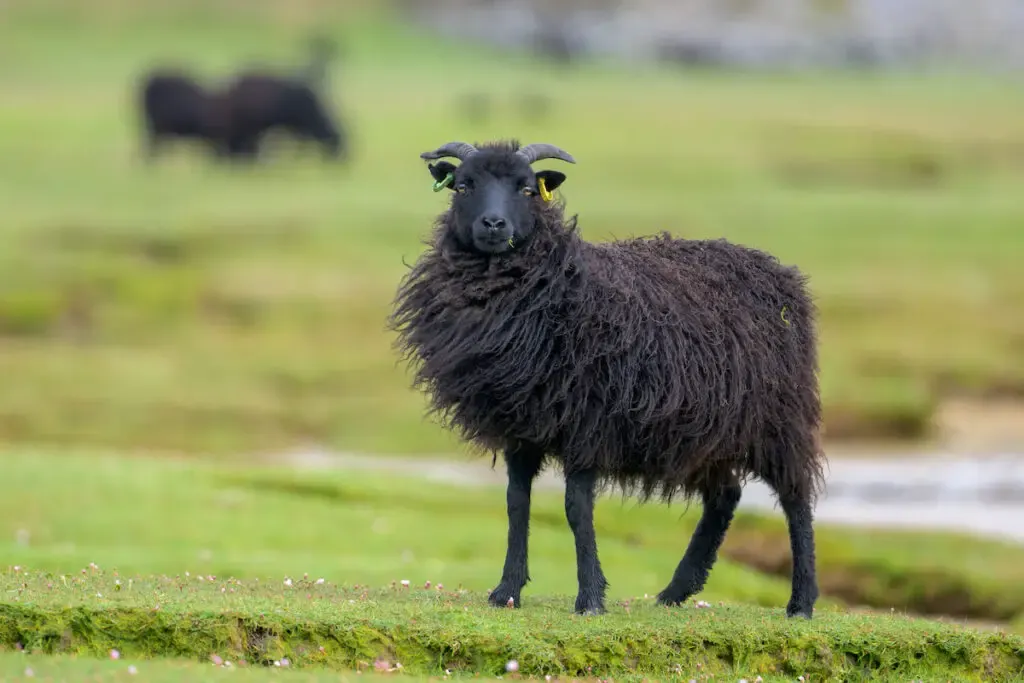
Black
Black sheep often have black bodies, faces, legs, and even a black tongue! They are considered a rare color and can even pop up in all white or other color herds. Some breeds were specifically honed in to produce black sheep since it such was a rare occurrence.
Black Welsh Mountain sheep are relatively small sheep that are solid black and do not have any wool that grows on their face or legs. This superbly colored breed of sheep can be found in the United States as well as overseas in Ireland and the United Kingdom.
Black is also a relatively common coat color seen in Finnsheep. The breed originated in Finland, hence its name, and it gained popularity in North America thanks to its tendency to produce calm sheep with beautiful soft wool.
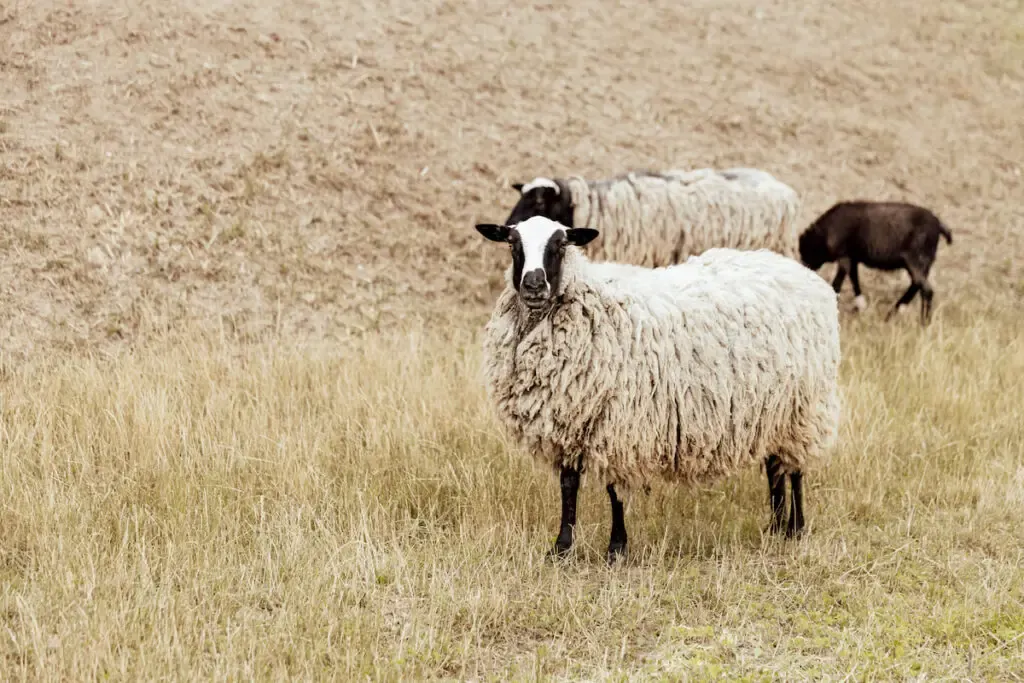
Black and White
Some sheep come in a combination of both black and white coloration. They can be spotted, piebald, or have both colors covering certain parts of their bodies.
Suffolk sheep originated in England and were first introduced to the United States in 1888. They are typically born solid black in color, but when they become adults, their heads and faces remain black while the rest of their body turns white!
Dorper sheep hail from South Africa and have a unique appearance along with their extremely hardy nature. Their bodies are solid white, including their legs, while their neck, head, and ears are solid black! They grow a light coat of wool and tend to do well in dry conditions.
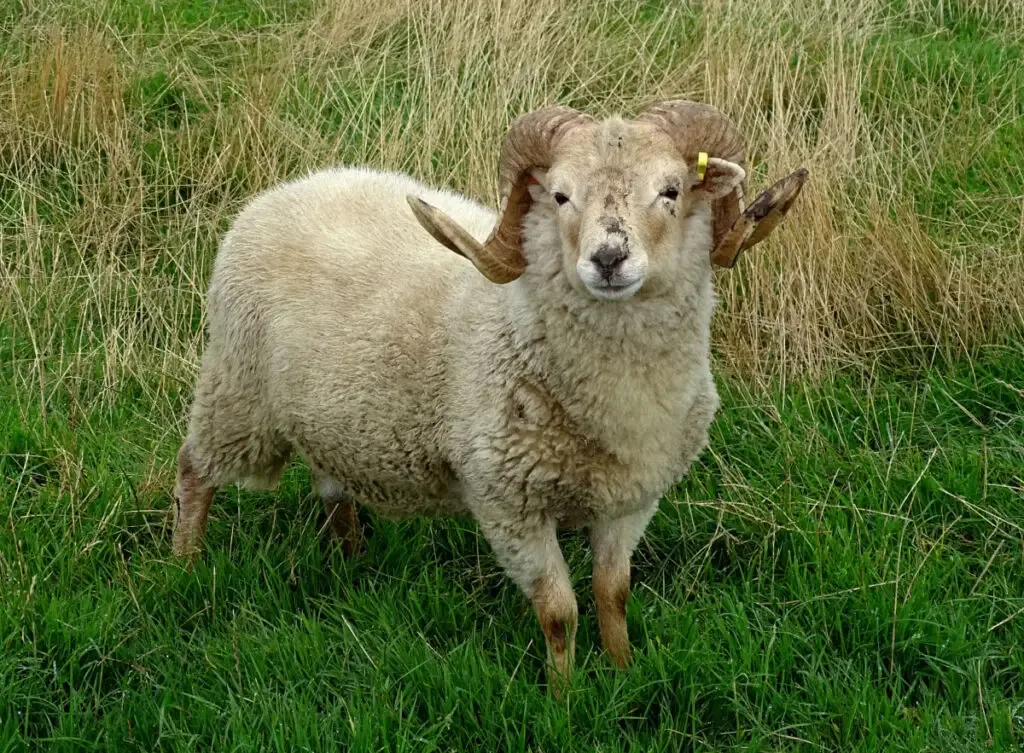
Cream
Cream-colored sheep can be grouped in with white colored sheep, but their wool or hair is actually cream in color, not bright white like other sheep breeds. They may even look slightly tan and may even be born with red-hued or brown-colored coats that lighten to a cream color over time.
Portland sheep have cream-colored wool with slightly darker legs and a tan face. They originated from England. Lambs tend to look more red when born, but their color eventually fades to a cream color with time.
California Variegated Mutant sheep can also be cream-colored, among a variety of other potential color variations.
Red
Sheep can also have a gorgeous red tint to their coats or bodies. While they will not be red-red like the color of a tomato, they often have rust-colored or fox-red-colored heads and coats. Some lambs are born red and their color fades to tan or cream as they age.
The California Red sheep breed produces sheep that are born a rusty-red color, but their wool lightens to a creamier color as they age. Their heads, necks, and legs retain the rustic red color, hence their name. They are absolutely adorable!
Coburger Fuchsschaf is another sheep breed that produces sheep with red-colored heads and legs.
They are also born red, a shade much darker than the California Red breed, and their wool also lightens as they age, while their heads and legs remain dark red. They hail from Europe and are currently sitting on the endangered sheep list.
Gray/Silver
Sheep can also come in various shades of gray, almost appearing silver or even slightly blue in color. Gray is a gorgeous color on sheep, although it may not be as profitable in the wool market.
Darker colored livestock is often less targeted by predators, so if predators are an issue, gray sheep may be the answer.
Some sheep in the Karakul breed can have dark heads with sometimes light gray bodies, almost creating an ombre effect from their heads and back. They originate from Persia and are used for wool production as well as meat production.
Herdwick sheep hail from England and are a tough breed that sport solid white faces but undeniably gorgeous light gray bodies of coarse wool.
The lambs are born solid black but their wool and bodies gradually lighten over time to a beautiful shade of gray.
Some other sheep breeds that can produce gray-colored sheep include Icelandic, Romanov, and Gotland.
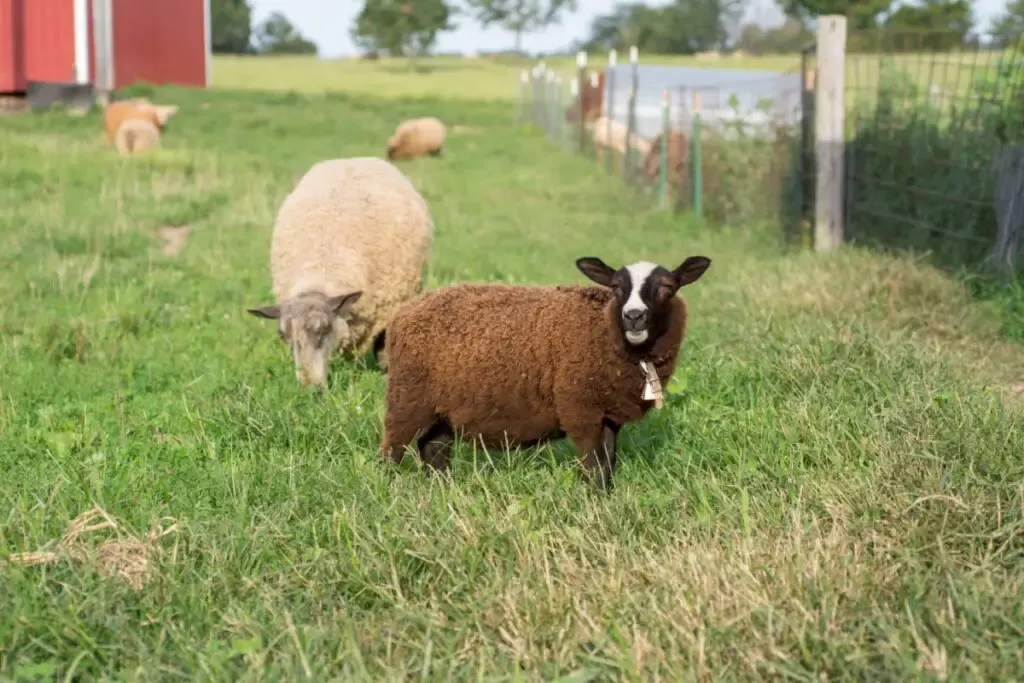
Brown (Moorit)
Another common color that sheep can be is brown. The shade of brown can vary from a light tan to dark and depends on the breed. Moorit is a termed used in the sheep industry to describe the brown color in a sheep, although many mistake it for a breed name.
The Icelandic sheep breed can produce sheep that come several different colors including brown. The Castlemilk Moorit sheep breed is endangered, but sheep within this breed can be a shade of brown anywhere from tan to a reddish-brown to a dark brown.
Other common sheep breeds that can produce brown-colored sheep include the Finnsheep, Corriedale, Shetland, Soay, Racka, and Karakul breeds.

White
White is by far the most commonly seen color in sheep and there is a reason for that. Since sheep primarily are used to produce wool, the color preference in wool plays a big role in the kind of sheep wool producers tend to raise.
White wool is the popular color in the fabric industry because it can be dyed any color, whereas other colors cannot.
The White Dorper sheep breed was created by sheep breeders using the Dorper breed. They are solid white, including their heads, unlike Dorper sheep. They grow quickly, have light wool growth, and tend to be a hardy breed.
Hampshire sheep have dark colored ears, noses, and legs while their bodies tend to be white. They originated in the United Kingdom and they grow thick coats of wool but have compact bodies. They are raised for both their wool and their meat production.
Some other popular sheep breeds that feature white-coated sheep include the Montadale, Rambouillet, Rideau Arcott, Royal White, Texel, Columbia, Cormo, and Corriedale breeds.
Are Black Sheep Rare?
Black sheep are considered rare because of genetics. The white color seen on many sheep is the result of a dominant gene that essentially negates the coloring process, cancelling out any other colors that may occur.
Black coloration in sheep is caused by a recessive gene and if both parents carry the gene, they have a 1 in 4 chance of producing a black sheep, regardless of their own color!

What Is the Rarest Sheep Color?
Black is considered to be a very rare color in sheep due to their genetic improbability, although red seems to be just as rare.
Color-coated sheep have long been pushed out of the wool industry, so farms built around the wool tend to be drawn to lighter-colored sheep.
Color-coated sheep, in general, would be considered rare with the sheer amount of white and cream-colored sheep that exist on farms today.
If You Breed a Pure Black Sheep With a Pure White Sheep, What Color Will the Baby Be?
The baby of a solid white sheep and a solid black sheep can be either white or it can be black. It all depends on the historical genetics of the white sheep.
The black sheep definitely carries the recessive gene for the black coloration, but if the white sheep does not, the baby will be white. If the white sheep carries the black gene, then the baby will have a 25% chance of being solid black.
Final Thoughts
Sheep come in more colors than just black and white. The number of color combinations and possibilities is vast when it comes to sheep.
While many of the popular breeds on farms include white or cream-colored sheep for wool production purposes, the truth is, any sheep, regardless of its color, would make an excellent addition to almost any farm.
Resources:
Learning about what colors sheep can be is a time-consuming task that involves a lot of research. Here are the sources used to create this article.
- http://icelandicsheep.com/resources/articles/color-genetics-in-icelandic-sheep/
- https://en.wikipedia.org/wiki/Icelandic_sheep
- https://en.wikipedia.org/wiki/Sheep
- http://afs.okstate.edu/breeds/sheep/blackwelshmountain/
- http://afs.okstate.edu/breeds/sheep/suffolk
- https://en.wikipedia.org/wiki/Black_sheep
- https://doublebardfarms.com/white_dorper_sheep.html
- https://en.wikipedia.org/wiki/Hampshire_sheep
- https://en.wikipedia.org/wiki/Portland_sheep
- https://en.wikipedia.org/wiki/Finnsheep
- https://www.sheepusa.org/resources-materials-breeddirectory
- http://afs.okstate.edu/breeds/sheep/coburgerfuchsschaf/
- https://en.wikipedia.org/wiki/Castlemilk_Moorit

